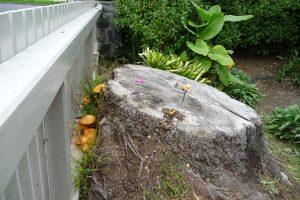Ark in the Park Video Diaries: Robin Release
For those of us lucky enough to live in the Waitakere Ranges with its awe-inspiring forests and thunderous coasts, communing with nature tends to be part of our everyday lives.
The many ways in which we do relate to the natural world and its other inhabitants has always been a source of fascination for me.
As a film-maker one often finds the best stories are on one’s own doorstep, in this case the activities of of local inhabitants, human and otherwise in our well loved local park, the Cascades Kauri Park in the Bethells valley.
Recently I have initiated a film project with local volunteers & fellow Forest and Bird members in which we will be recording some of the activities taking place at the Ark in the Park located at the Cascades Kauri Park in Bethells Valley, near Auckland.
The Ark in the Park project is a joint project between Forest and Bird and the Auckland Regional Council to restore this vast stretch of kauri forest and bring back the birds that have disappeared from its branches.
Native falcons, bellbirds, kokako and kiwi are just some of the birds that have been lost from this tract of forest. In the past few years, hihi and whitehead have been re-introduced into the park, and a transfer of kokako is expected to take place later this year.
Our first filming mission was to the Pureora Forest in the Waikato on a joint robin catching trip with volunteers from the Puketi Forest Trust.
Local iwi Ngati Rereahu entrusted 30 toutouwai/pitoitoi into our guardianship for release into the park, so over a period of two weeks, volunteers worked day and night to band and trap robin – not an easy task as you will see!
We will be posting new video clips regularly so keep an eye out for them and let us know what you think.
Jacqui Brooks
small blue marble productions

